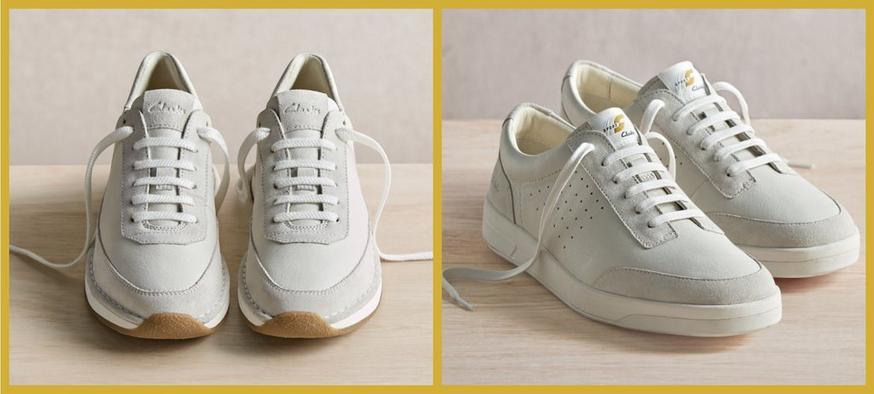Is it better to have smaller or bigger shoes? The answer is neither. Optimal shoe fit is crucial for foot health shoe size, shoe sizing comfort and overall well-being. Shoes that are too small can cause pain and foot problems, while shoes that are too big can lead to instability and injuries. This article dives into the importance of getting the right fit, exploring the risks of wearing shoes that are too small or too large and how it affects your feet. We’ll cover everything from toe box space to heel slippage shoe fit and how these elements influence your daily comfort.
Image Source: cdn.media.amplience.net
Fathoming Shoe Size: More Than Just a Number
Shoe sizing can be surprisingly complex. While shoe sizes are standardized, subtle differences exist between brands and even shoe styles. A size 8 in one brand may feel completely different from a size 8 in another. Shoe size impact on performance and everyday comfort depends heavily on selecting the right fit that accommodates your foot’s unique shape and size.
- Brannock Device: This is the standard tool used in shoe stores to measure foot length and width. It provides a good starting point, but it’s not foolproof.
- Foot Shape Matters: Consider your foot’s shape. Do you have wide feet, narrow feet, high arches, or flat feet? Some shoes are designed to better accommodate specific foot types.
- Socks Matter: When trying on shoes, wear the type of socks you would normally wear with that shoe. This will ensure a more accurate fit.
The Importance of a Proper Fit
The way your shoes fit affects more than just comfort. It can impact your posture, balance, and even your overall health. Ill-fitting shoes can lead to a range of problems, from minor annoyances to serious medical conditions.
The Perils of Too-Small Shoes
Wearing shoes that are too small can lead to many foot problems. Tight shoes vs loose shoes create different problems. Here are some of the most common consequences of wrong shoe size, if you’re going too small:
- Blisters: Friction from tight shoes can cause painful blisters, especially on the toes and heels.
- Bunions: Over time, cramped toe boxes can contribute to the development or worsening of bunions, a painful bony bump that forms on the joint at the base of the big toe.
- Hammertoes: Similarly, tight shoes can force toes to bend unnaturally, leading to hammertoes, where the toe becomes permanently bent at the middle joint.
- Ingrown Toenails: Pressure from tight shoes can cause the toenail to grow into the surrounding skin, leading to painful ingrown toenails.
- Morton’s Neuroma: This condition involves thickening of the tissue around a nerve in the foot, often between the third and fourth toes. Tight shoes can compress the nerves and exacerbate the condition.
- Circulation Problems: Shoes that are too tight can restrict blood flow to the feet, leading to numbness, tingling, and even pain.
- Black Toenails: Repeated pressure on the toes can cause bleeding under the toenail, leading to a black toenail, which can eventually fall off.
How Tight Shoes Affect Your Body
Beyond foot problems, wearing shoes that are too small can also affect your overall posture and gait. You might start walking differently to compensate for the discomfort, which can lead to pain in your ankles, knees, hips, and back.
| Problem | Cause | Symptoms |
|---|---|---|
| Blisters | Friction from tight shoes | Painful, fluid-filled bumps on the skin |
| Bunions | Cramped toe boxes | Bony bump at the base of the big toe, pain, inflammation |
| Hammertoes | Tight shoes forcing toes to bend | Bent toe, pain, difficulty wearing shoes |
| Ingrown Toenails | Pressure on the toenail from tight shoes | Pain, redness, swelling around the toenail |
| Morton’s Neuroma | Compression of nerves in the foot | Pain, numbness, tingling between the toes |
| Black Toenails | Repeated pressure on the toes | Bleeding under the toenail, discoloration |
The Pitfalls of Too-Big Shoes
While wearing shoes that are too small is clearly problematic, wearing shoes that are too big also presents its own set of challenges.
- Instability: Loose shoes can make it difficult to maintain balance, increasing the risk of falls and injuries, especially during physical activity.
- Blisters: Surprisingly, loose shoes can also cause blisters. Excess movement inside the shoe creates friction, leading to blister formation.
- Arch Support Issues: Shoes that are too big may not provide adequate arch support shoe size, leading to foot fatigue and pain.
- Heel Slippage: When shoes are too big, the heel can slip out of the shoe with each step, causing discomfort and potentially leading to blisters or chafing. Heel slippage shoe fit is a common sign of oversized shoes.
- Toe Clawing: To keep loose shoes on, you might unconsciously grip with your toes, leading to toe clawing, which can cause pain and discomfort.
- Altered Gait: Similar to wearing shoes that are too small, wearing shoes that are too big can change your gait, leading to pain in other parts of your body.
How Loose Shoes Affect Your Body
Wearing shoes that are too big can force your foot to work harder to stay in place. This can lead to muscle fatigue and increase the risk of sprains and strains. The consequences of wrong shoe size are not just confined to the feet.
How Shoes Should Fit: Finding the Goldilocks Zone
The ideal shoe fit provides ample toe box space, a secure heel, and adequate arch support. Here’s a checklist to ensure optimal shoe fit:
- Length: There should be about a thumb’s width (approximately 1 cm) of space between the end of your longest toe and the end of the shoe.
- Width: The shoe should be wide enough to accommodate the widest part of your foot without feeling cramped or restricted.
- Heel: The heel should fit snugly in the heel cup of the shoe, with minimal slippage.
- Arch Support: The arch of the shoe should align with the arch of your foot, providing adequate support.
- Toe Box Space: Your toes should have enough room to wiggle freely without feeling compressed. This is crucial for preventing foot problems.
- Overall Comfort: The shoe should feel comfortable from the moment you put it on. Don’t assume that a shoe will “break in” and become comfortable later.
Tips for Trying on Shoes
- Shop in the Afternoon: Feet tend to swell throughout the day, so it’s best to try on shoes in the afternoon or evening when your feet are at their largest.
- Wear Appropriate Socks: As mentioned earlier, wear the type of socks you would normally wear with the shoe.
- Walk Around: Don’t just stand in the shoes. Walk around the store to get a feel for how they fit and whether there are any areas of discomfort.
- Trust Your Instincts: If a shoe doesn’t feel right, don’t buy it. Trust your instincts and keep looking until you find a shoe that fits well and feels comfortable.
Shoe Size Fluctuations
Keep in mind that your shoe size can change over time due to factors such as age, weight gain or loss, pregnancy, and certain medical conditions. It’s a good idea to have your feet measured periodically, especially if you notice that your shoes are no longer fitting comfortably.
Choosing the Right Shoe for Different Activities
The optimal shoe fit can also vary depending on the activity you’ll be doing.
- Running Shoes: Running shoes should provide ample cushioning and support to absorb impact. They should also have a snug but not constricting fit.
- Walking Shoes: Walking shoes should be comfortable and supportive, with a flexible sole that allows for natural foot movement.
- Hiking Boots: Hiking boots should provide ankle support and protection from the elements. They should also have a durable sole with good traction.
- Dress Shoes: Dress shoes should fit well and be comfortable enough to wear for extended periods. Look for shoes with good arch support and cushioning.
- Work Boots: Work boots should provide protection from hazards in the workplace. They should also be durable and comfortable enough to wear all day.
Special Considerations
- Children’s Shoes: Children’s feet grow rapidly, so it’s important to check their shoe size frequently. Ensure that their shoes have enough room for growth without being too loose.
- Athletes’ Shoes: Athletes should choose shoes that are specifically designed for their sport or activity. Consult with a podiatrist or athletic shoe specialist for recommendations.
- Diabetic Shoes: People with diabetes should wear shoes that provide ample cushioning and support to protect their feet from injury. They should also have their feet examined regularly by a podiatrist.
Shoe Care and Maintenance
Proper shoe care can extend the life of your shoes and help them maintain their fit and comfort.
- Clean Your Shoes Regularly: Clean your shoes regularly to remove dirt and debris.
- Use Shoe Trees: Shoe trees can help maintain the shape of your shoes and prevent them from creasing.
- Rotate Your Shoes: Rotate your shoes regularly to allow them to air out and dry completely.
- Repair Your Shoes: Repair your shoes as needed to prevent small problems from becoming big problems.
- Store Your Shoes Properly: Store your shoes in a cool, dry place away from direct sunlight.
FAQ: Addressing Common Concerns About Shoe Fit
- What is the best time of day to buy shoes?
- The best time to buy shoes is in the afternoon or evening when your feet are at their largest due to swelling.
- Can I stretch shoes that are too tight?
- Yes, there are methods to stretch shoes, such as using a shoe stretcher or wearing thick socks with the shoes. However, stretching may not always be effective, especially for shoes that are significantly too small.
- Who is most at risk from wearing ill-fitting shoes?
- Children (whose feet are still developing), athletes (who place high demands on their feet), and people with diabetes or other foot conditions are most at risk from wearing ill-fitting shoes.
- How often should I replace my shoes?
- The frequency of shoe replacement depends on how often you wear them and the type of activity you do. As a general rule, running shoes should be replaced every 300-500 miles, while everyday shoes may last longer.
- Can I wear insoles to improve shoe fit?
- Yes, insoles can be used to improve shoe fit, especially for people with high arches or flat feet. They can also add cushioning and support.
- What is the impact of shoe size on performance?
- The right shoe size is directly related to performance. For example, if the shoes are too small they cause blisters. If the shoes are too large they may result in loss of stability. Thus, optimal performance can be ensured by choosing the right shoe.
Conclusion: Prioritizing Foot Health Through Proper Shoe Fit
Choosing the right shoe size is an investment in your foot health and overall well-being. By understanding the risks associated with wearing shoes that are too small or too big, and by following the tips outlined in this article, you can ensure that your shoes provide the comfort, support, and protection you need to stay active and healthy. Remember to prioritize optimal shoe fit, consider your foot’s unique needs, and consult with a professional when necessary. Your feet will thank you for it.

David Ruperto is a Footwear Engineer with expertise in 3D printing, design, and pattern making. With a background in Fine Arts from CUNY and training from SLEM and Cordwainer’s Savannah, he blends creativity with innovation. Based in New York, he shares his knowledge on BestForShoes.com, helping others explore the world of footwear.

